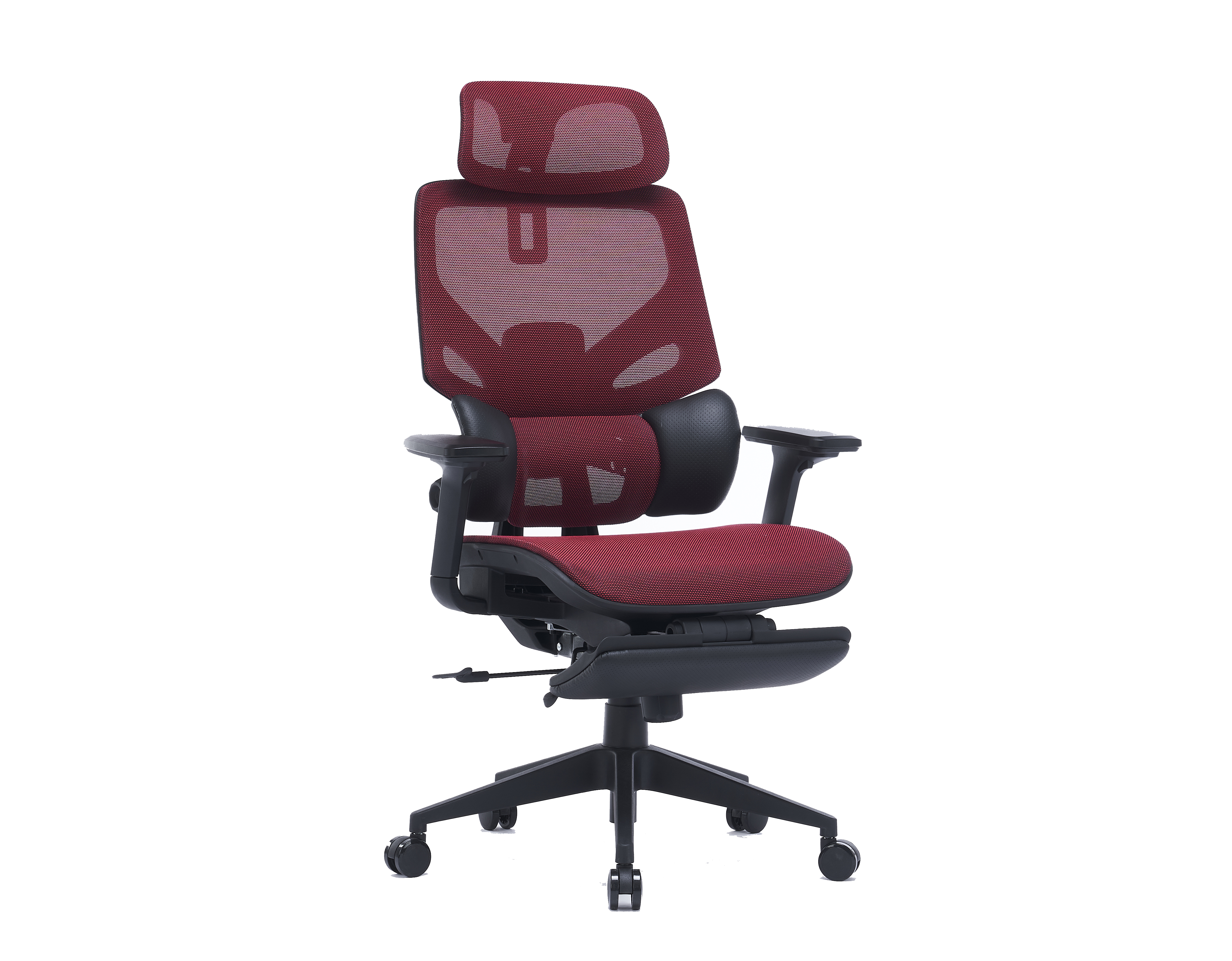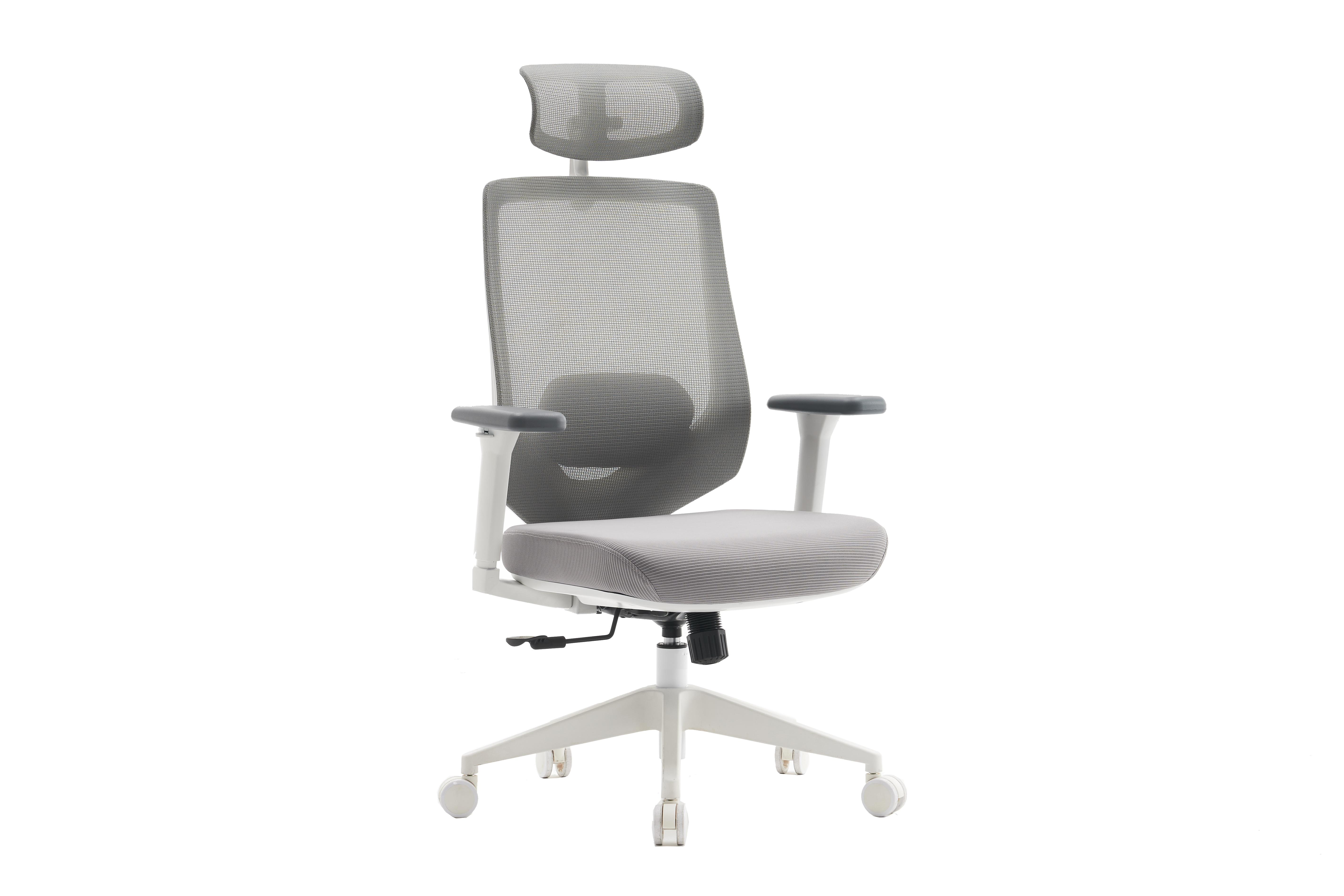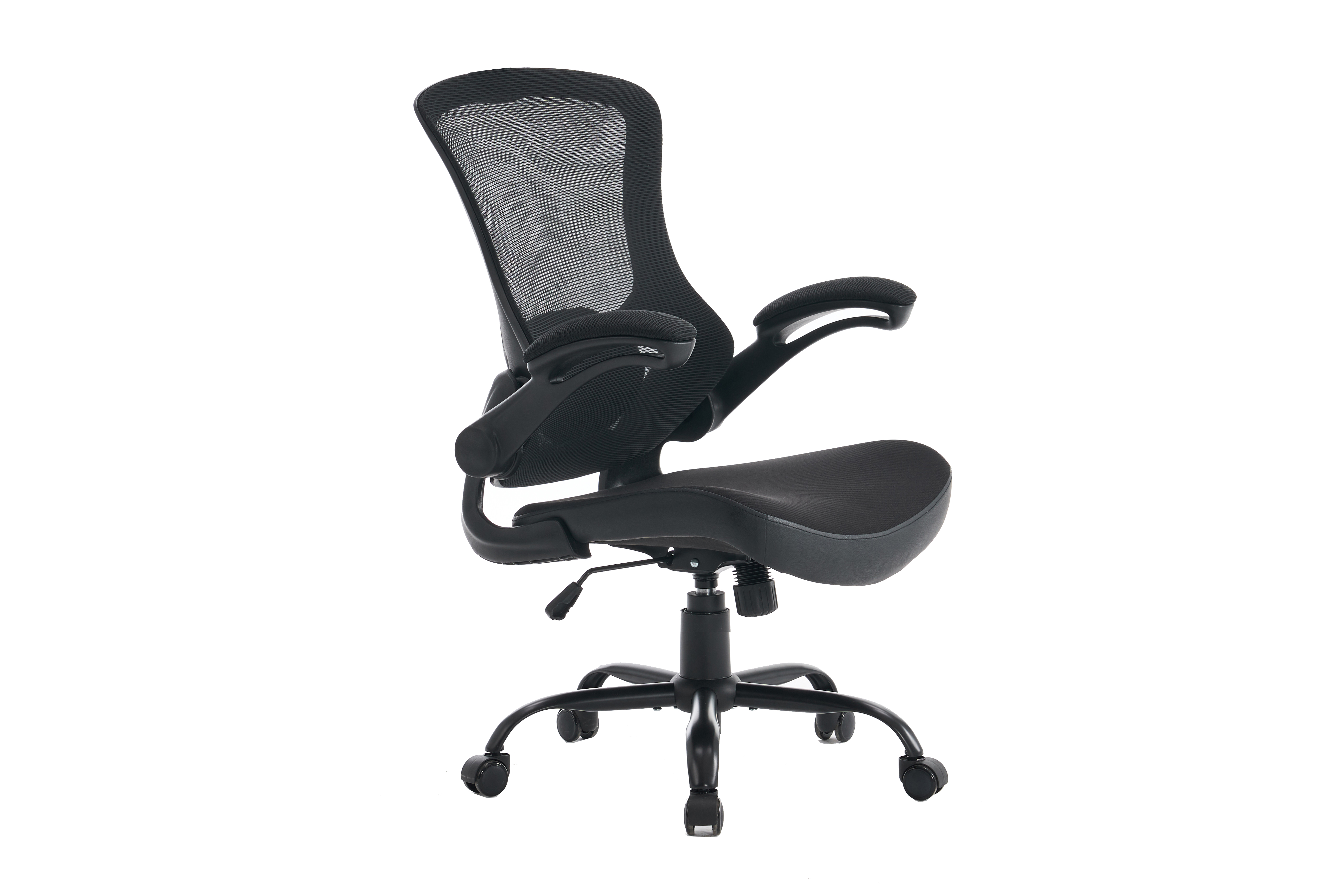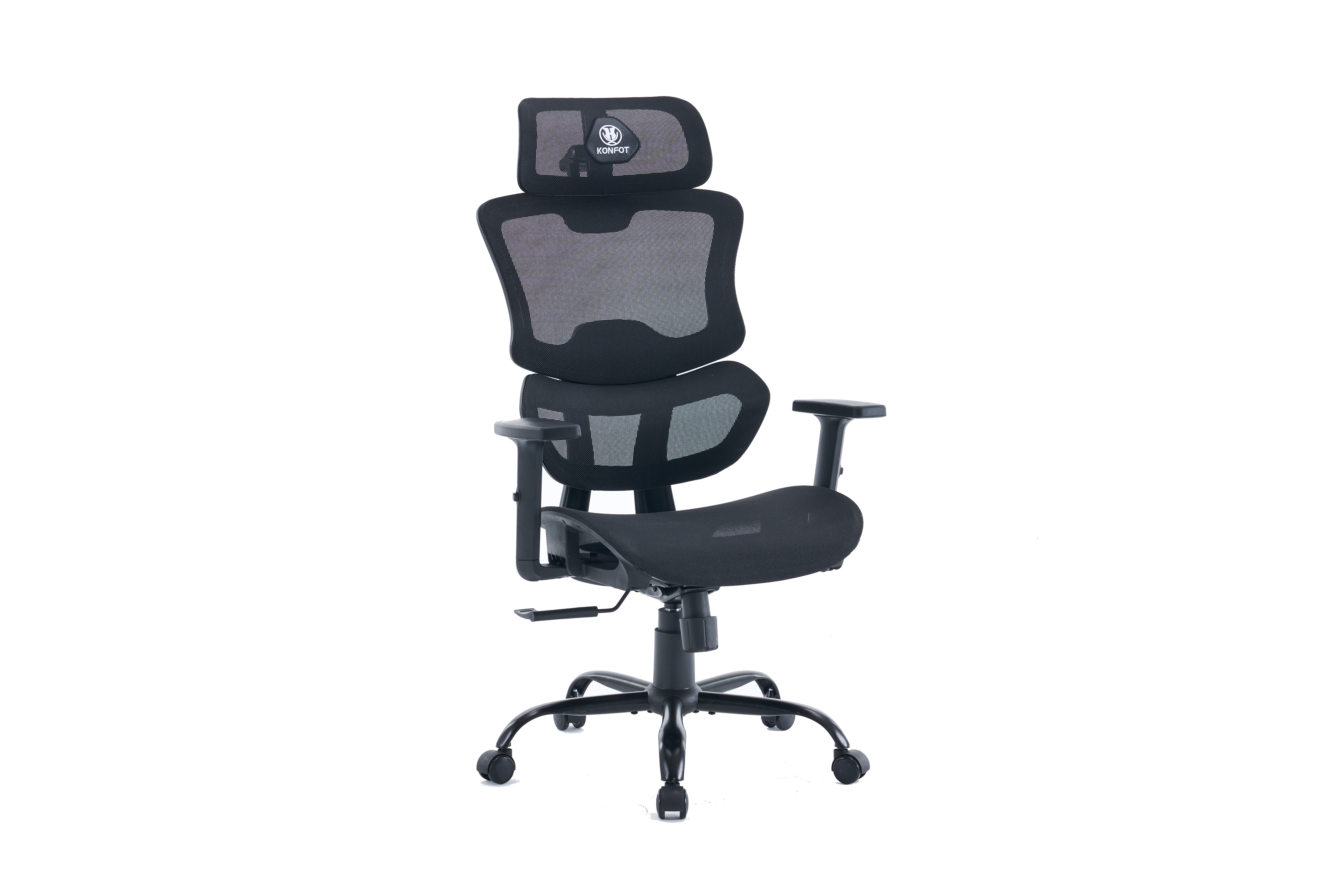NEWS
Office Chair vs Ergonomic Mesh Chair: Which Improves Posture?
Office Chair Features and Posture Impact
Standard Office Chair Components
Standard office chairs are designed with essential components aimed at promoting comfort and proper posture. These components include seat height adjustment, armrest adjustability, and backrest angle modification. Each feature is crucial in its own way. For example, adjusting the seat height ensures that your feet rest flat on the ground, helping maintain ergonomic posture and reducing strain on your lower back. Armrests that can be adjusted prevent shoulder tension and enhance comfort during long sessions at the desk. The backrest angle is vital for supporting the natural curve of your spine, thus minimizing neck and back pain. These features are in line with industry standards such as those recommended by the Occupational Safety and Health Administration (OSHA), which suggest ergonomic considerations to prevent work-related musculoskeletal problems.
Common Posture Issues in Traditional Designs
Traditional office chair designs often lead to posture-related problems due to their lack of adjustability and ergonomic features. Common issues include slouching and uneven weight distribution, which stem from inadequate support and mismatched alignments between chair height and desk level. These posture problems can result in chronic pain and musculoskeletal disorders over time. According to various healthcare studies, poor posture is linked to conditions like lower back pain, which affects a significant portion of office workers. Traditional designs often fail to accommodate individual differences in body size and shape, exacerbating these issues by requiring awkward adjustments that strain the body. This calls for a transition to more flexible and adjustable ergonomic solutions that prioritize user comfort and health.
Material Choices vs. Spinal Pressure
The choice of materials in office chairs significantly impacts spinal pressure and overall comfort during long sitting hours. Different materials, such as foam and mesh, have distinct effects on spinal pressure distribution. Foam provides cushioning to reduce pressure but lacks breathability, which can cause discomfort in warmer environments. Conversely, mesh offers superior airflow, reducing sweating and maintaining comfort over extended periods. Scientific studies highlight how breathable materials enhance comfort by improving airflow and distributing pressure evenly across vertebrae, which is vital in preventing prolonged spinal discomfort. Understanding the impact of material choice is crucial for optimizing office work comfort and maintaining spinal health during long seated work sessions.
Ergonomic Mesh Chair Advantages
Breathable Mesh Material Benefits
Mesh materials in ergonomic chairs offer significant advantages, especially in terms of ventilation and heat dissipation. These breathable mesh chairs are designed to improve airflow, thereby reducing sweat and discomfort during extended periods of use. Unlike traditional upholstered chairs, mesh chairs provide a cooling effect which enhances user satisfaction. Surveys reveal that users of mesh chairs often report increased comfort levels in comparison to those using non-mesh alternatives. This makes mesh materials a preferred choice for anyone seeking a comfortable desk chair for long work hours.
Adaptive Lumbar Support Systems
Lumbar support is a core feature of ergonomic chairs, and adaptive systems take user comfort to the next level by adjusting to individual needs. These systems are designed to support the natural curve of the spine, promoting proper posture and reducing lower back strain. Data shows that users experience a marked improvement in comfort levels after switching to chairs with adaptive lumbar support. Insights from ergonomic experts confirm that effective lumbar support is crucial for maintaining overall posture, making these systems an essential component of any computer desk chair.
Multi-Angle Adjustment Capabilities
Multi-angle adjustment capabilities are vital for ergonomic chairs, allowing optimal customization tailored to user preferences. Such adjustments help prevent repetitive strain injuries by enabling users to find the most comfortable position for their task at hand. The ability to adjust seat height, backrest angle, and armrest position significantly enhances productivity, as evidenced by case studies where employee performance improved after transitioning to adjustable ergonomic chairs. These features make multi-angle adjustment a critical functionality in the best office chair for gaming and work environments alike.
Head-to-Head Posture Support Comparison
Lumbar Support Effectiveness
When it comes to lumbar support in ergonomic chairs, the design plays a crucial role in effectiveness. Static lumbar supports offer limited adjustment, merely providing a fixed point of contact to support the lower back. In contrast, dynamic lumbar supports adapt to the user's movements, providing continuous support and promoting better posture. Clinical trials illustrate the superiority of dynamic designs, showing a significant reduction in chronic back pain among users who switched from static to dynamic lumbar systems. User testimonials also highlight improvements in posture and reduced strain during prolonged sitting, cementing dynamic lumbar supports as the preferred choice for many seeking optimal comfort and health benefits.
Pressure Distribution Analysis
Pressure distribution in ergonomic chairs is a key factor influencing comfort and support. Advanced methodologies, such as pressure mapping technology, help in understanding how pressure is spread across the spine, providing insights into design efficiency. Different ergonomic designs, like those with adaptive backing, have proven to significantly improve distribution by reducing concentrated stress points along the back. Data from studies indicate that ergonomic chairs with balanced pressure distributions correlate with lower discomfort levels, highlighting their effectiveness in preventing back pain. Users often report feeling less fatigued and more alert after using chairs designed with these considerations in mind.
Long-Term Health Outcomes
The impact of ergonomic support on long-term health cannot be understated. Research has consistently linked poor posture to increased risks of chronic pain and degenerative spinal conditions. Proper ergonomic support helps mitigate these risks by maintaining correct body alignment, thus reducing strain on muscles and joints. Health experts emphasize the importance of ergonomics in preventing conditions like sciatica and herniated discs, which can develop from inadequate support. By investing in ergonomic solutions, individuals not only improve their immediate comfort but also safeguard their long-term health, underscoring the critical role that quality chairs play in workplace wellness.
Top Ergonomic Mesh Chairs for Posture Improvement
Master Ergonomic Mesh Chair - High Back Adjustable Office Chair with Headrest & Lumbar Support
The Master Ergonomic Mesh Chair is designed to offer superior comfort and adjustable features crucial for posture improvement. With a high back, headrest, and specialized lumbar support, it caters to diverse ergonomic needs. Its breathable mesh design enhances ventilation while ensuring dynamic support, which is essential for long working hours without the discomfort of heat build-up. This chair combines modern aesthetics with practical ergonomic features, making it ideal for modern workspaces keen on promoting employee well-being.
Original Ergonomic Mesh Chair - High Back Swivel Office Chair with Lumbar Support
The Original Ergonomic Mesh Chair offers a quintessential blend of comfort and support with its high back swivel feature and targeted lumbar support. This design encourages optimal sitting posture, particularly for individuals spending extensive periods at their desks. The chair's mesh material enhances airflow and supports the natural spine curve, reducing potential posture-related discomforts while supporting active movements.
Core Ergonomic Mesh Chair - Executive Swivel Office Chair with Headrest & Footrest
The Core Ergonomic Mesh Chair takes comfort to an executive level, featuring a swivel function, headrest, and footrest for comprehensive ergonomic support. This design focuses on enhancing user comfort and reducing fatigue during prolonged sitting periods. The ergonomic chair is a user-centric solution meant for those valuing luxury in their workspace, boasting innovative features to support better posture and reduce discomfort.
Original Ergonomic Mesh Chair - Executive Swivel Office Chair with Headrest & Footrest
Similar to its counterparts, the Original Ergonomic Mesh Chair delivers premium ergonomic benefits with its executive design incorporating swivel capabilities, a supportive headrest, and a footrest. This chair is crafted for those aiming to maintain productive days without compromising on comfort, focusing on advanced ergonomic functionality to support posture and overall well-being.



